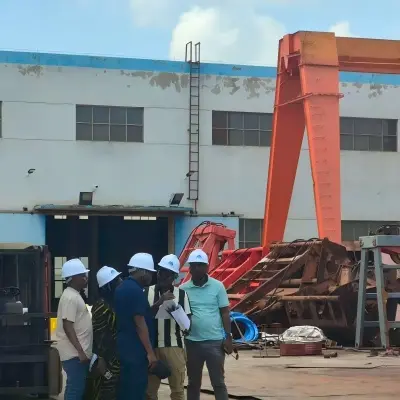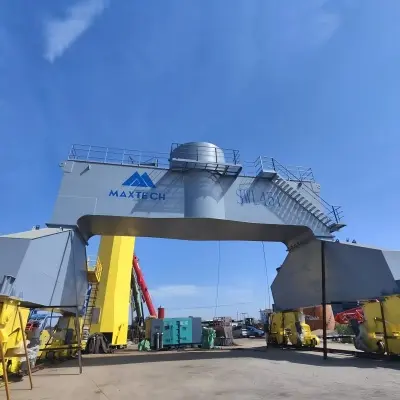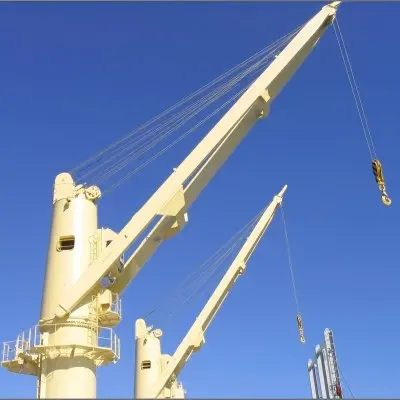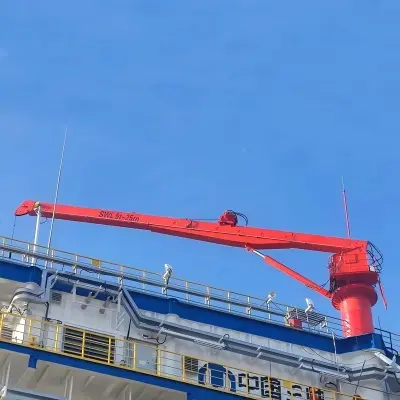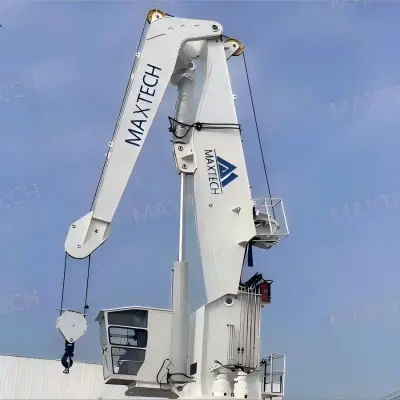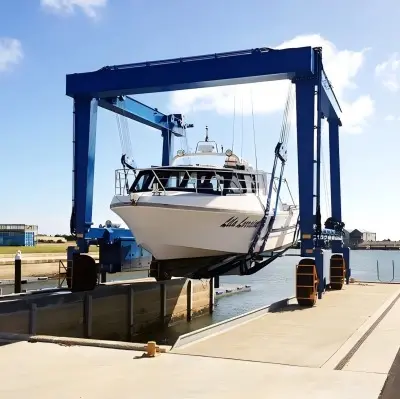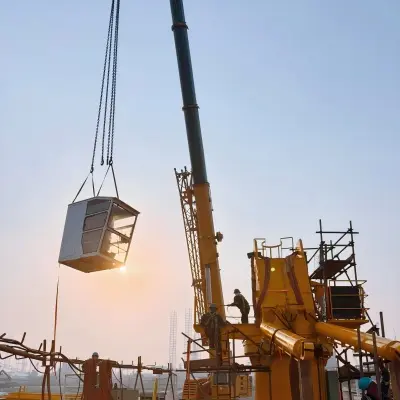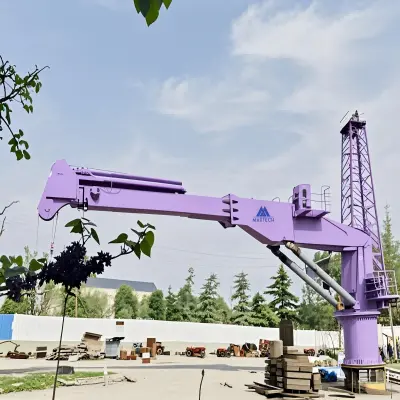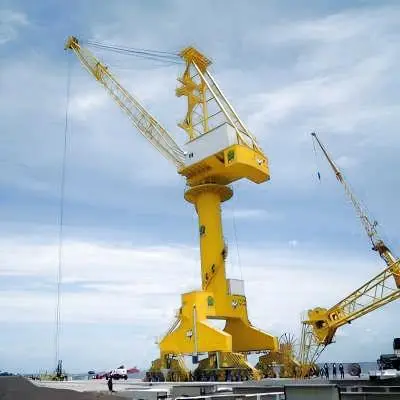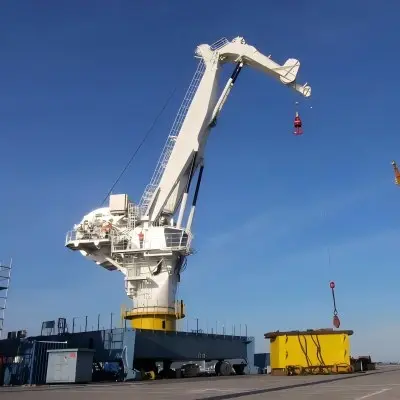Mobile Marine cranes: the core of Marine operations
Structural Features
1. Installation Platform: Mobile marine cranes are installed on specially - designed ship platforms. These platforms are engineered to have excellent stability and seakeeping ability, enabling them to adapt to various sea conditions.
2. Jib Types: The jibs can be classified into telescopic and folding types. Telescopic jibs, with the help of advanced hydraulic systems, can quickly adjust their lengths to meet different hoisting requirements. Folding jibs can be folded up when necessary to save space.
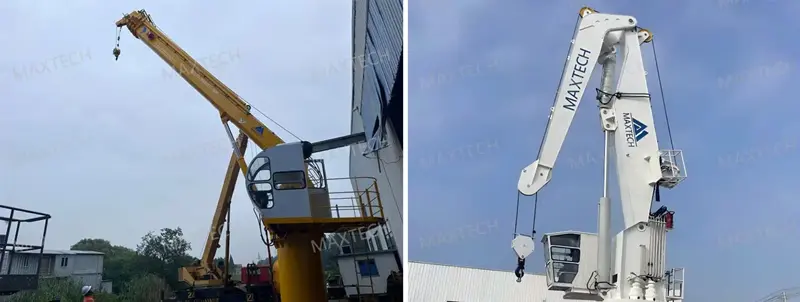
Working Principle
1. Power Source: It mainly relies on high - power diesel engines to provide power, offering strong driving force for the hoisting, luffing, and slewing actions of the Crane.
2.Energy Conversion and Control: Hydraulic pumps convert the mechanical energy of the engine into hydraulic energy to drive each actuator. Additionally, an advanced electronic control system is equipped, allowing operators to precisely control the harbor crane's actions. The system also has real - time monitoring and fault - diagnosis functions.
Actual Application Scenarios
1. Port Loading and Unloading Operations: In ports, mobile marine cranescan quickly and efficiently hoist various containers, bulk cargo, and other goods. Compared with Fixed quay cranes, they are not restricted by fixed positions and can flexibly move between different berths, enhancing the port's cargo handling capacity. They are especially suitable for small ports or temporary operation areas.
2. Offshore Engineering Construction: In offshore wind power and other engineering construction projects, it is responsible for hoisting and precisely installing large components such as wind turbine towers and blades. Its strong hoisting capacity and flexible working range ensure the smooth progress of projects.
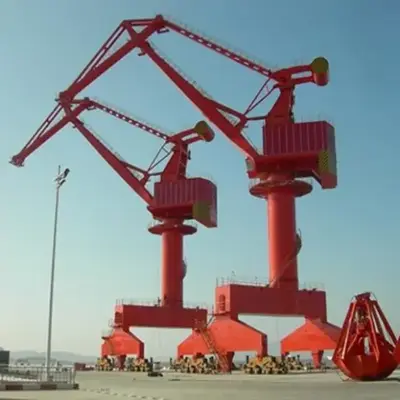
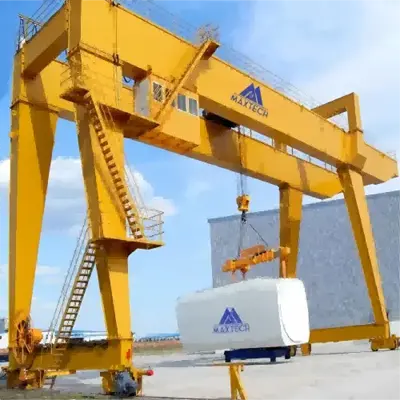
Advantages
1. High Mobility: It can move freely in the vast ocean area and quickly respond to the needs of different work sites, which traditional land - based cranes and fixed offshore cranes do not possess.
2. Good Corrosion Resistance: The particularity of the marine environment is fully considered in the design. Special anti - corrosion coatings and corrosion - resistant materials are used, effectively extending the service life of the equipment and reducing maintenance costs.
Future Development Trends
1. Material and Structure Optimization: Manufacturers will increase R & D investment, use new high - strength and lightweight materials, and optimize the structural design of offshore cranes. This will enhance the hoisting capacity while reducing the equipment's self - weight and improving energy efficiency.
2. Intelligent Development: Advanced sensor technology, artificial intelligence algorithms, and remote communication technology will be introduced to achieve autonomous operation, intelligent monitoring, and remote operation of Port Cranes, improving operation safety and efficiency.
Mobile marine cranes play a crucial role in offshore operations with their unique advantages and will continue to promote the development of the marine economy and offshore engineering construction in the future.

